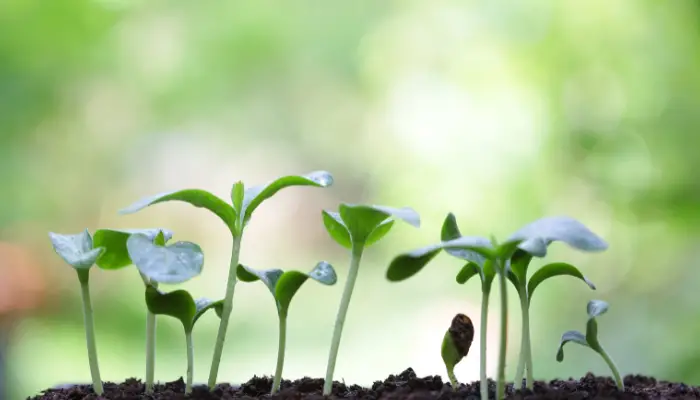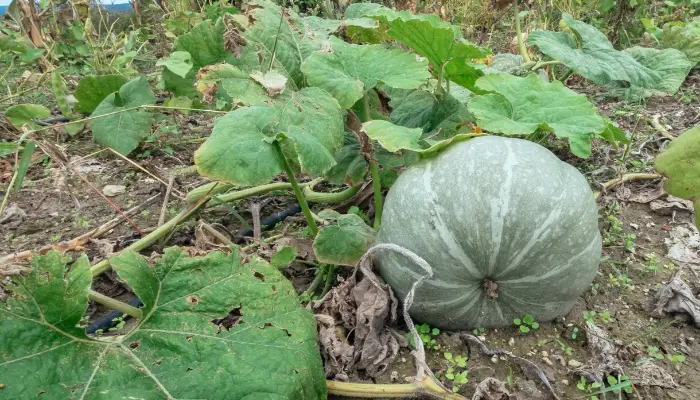Pumpkins are one of the most popular and versatile fruits of the fall season. They can be used for carving, decorating, baking, and even feeding wildlife. But did you know that you can also grow your pumpkins from the seeds inside them? In this blog post, I will show you how to plant pumpkin seeds straight from the pumpkin and what you need to know to have a successful harvest.
Why plant pumpkin seeds?

There are many benefits to planting your pumpkin seeds. Here are some of them:
- You can save money by growing your pumpkins instead of buying them from the store or the pumpkin patch.
- You can choose the variety of pumpkins that suits your needs and preferences. There are many types of pumpkins, from small and sweet to large and giant, from orange and round to white and flat.
- You can enjoy the satisfaction of harvesting your pumpkins and using them for various purposes, such as cooking, carving, or donating.
- You can reduce waste by using the whole pumpkin, including the seeds, flesh, and skin.
- You can have fun and learn something new by engaging in a gardening project with your family or friends.
How to Plant Pumpkin Seeds

Planting pumpkin seeds is not very difficult, but it does require some preparation and care. Here are the steps you need to follow:
1. Prepare Your Seeds
If you are planting seeds that you removed from the inside of a fresh pumpkin, you must clean and dry them before planting. To do this, you need to:
- Scoop out the seeds and the pulp from the pumpkin with a spoon or your hands.
- Rinse the seeds in a colander under cold water and remove any remaining pulp.
- Spread the seeds on a paper towel or a baking sheet and let them air dry for a few days. You can also use a hair dryer or an oven to speed up the process, but be careful not to overheat the seeds.
- Select the biggest and healthiest seeds and store them in an envelope or jar in a cool, dry place until you are ready to plant them.
If you are planting store-bought seeds, you can skip this step and just follow the instructions on the package.
2. Choose a Planting Site
Pumpkins need a lot of space, sun, and water to grow well. Therefore, you need to choose a planting site that meets these requirements. To do this, you need to:
- Pick a spot that gets at least six hours of direct sunlight per day and has good drainage. Avoid areas that are too shady, wet, or windy.
- Clear the area of any weeds, rocks, or debris, and loosen the soil with a shovel or rake. You can also add some compost or fertilizer to enrich the soil and improve its texture.
- Make sure you have enough room to space out your pumpkin seeds. Depending on the variety, you may need to plant them three to five feet apart in rows that are six to ten feet apart.
3. Plant Your Seeds
The best time to plant pumpkin seeds is from late May to early July, depending on your climate and the variety of pumpkin. To do this, you need to:
- Dig a hole about one inch deep and place two or three seeds in it. Cover them with soil and water them well.
- Label the hole with the name and date of the pumpkin variety you planted.
- Repeat the process for the rest of the seeds, making sure to leave enough space between them.
- Keep the soil moist but not soggy until the seeds germinate, which may take one to two weeks.
How to Care for Your Pumpkins
Once your pumpkin seeds sprout, you need to provide them with some attention and protection. Here are some tips on how to care for your pumpkins:
- Thin out the seedlings by removing the weakest ones and leaving only the strongest ones in each hole. This will prevent overcrowding and competition for nutrients and water.
- Mulch the soil around the plants with straw, leaves, or grass clippings to conserve moisture, suppress weeds, and prevent soil erosion.
- Water the plants regularly, especially during hot and dry weather. Avoid wetting the leaves and the fruits, as this may cause fungal diseases or rotting.
- Fertilize the plants every two to four weeks with a balanced or high-potassium fertilizer. Follow the directions on the label and do not overfeed the plants, as this may result in excessive vine growth and poor fruit quality.
- Prune the vines by pinching off the tips and the side shoots when they reach about ten feet long. This will encourage the plants to focus on producing fruits and not leaves.
- Pollinate the flowers by hand if there are not enough bees or other pollinators in your area. To do this, you need to transfer the pollen from the male flowers (which have thin stems) to the female flowers (which have small fruits at the base) with a small brush or your finger.
- Support the fruits by placing them on a board, a brick, or a piece of cloth to prevent them from touching the ground and getting damaged by pests, diseases, or moisture.
- Protect the plants from frost, pests, and diseases by covering them with a row cover, a cloche, or a blanket at night or when the temperature drops below 50°F. You can also use organic or chemical pesticides and fungicides to control common problems, such as powdery mildew, squash bugs, and vine borers.
How to Harvest and Store Your Pumpkins

The final step in growing pumpkins is harvesting and storing them. Here are some guidelines on how to do this:
- Harvest your pumpkins when they are fully ripe, which is usually in late September or early October. You can tell if a pumpkin is ripe by its color, shape, size, and sound. A ripe pumpkin should be bright orange (or the color of its variety), firm, heavy, and hollow-sounding when tapped.
- Cut the pumpkins from the vines with a sharp knife or a pair of scissors, leaving about two inches of stem attached to the fruit. Do not carry or lift the pumpkins by the stem, as this may cause them to break off and expose the fruit to rotting.
- Cure the pumpkins by placing them in a warm and dry place for about two weeks. This will harden the skin, heal any wounds, and improve the flavor and shelf life of the pumpkins.
- Store the pumpkins in a cool and dry place, such as a basement, a garage, or a cellar. Keep them away from direct sunlight, heat, and moisture. Check them regularly for signs of spoilage, such as soft spots, mold, or rot.
- Enjoy your pumpkins by using them for various purposes, such as cooking, carving, or decorating. You can also save some seeds for next year’s planting or share them with your friends and neighbors.
I hope this blog post has helped you learn how to plant pumpkin seeds straight from the pumpkin and grow your own pumpkins. If you have any questions or comments, please feel free to leave them below. Happy gardening!
Sources:
- Can You Plant Pumpkin Seeds Straight From The Pumpkin? Now Answered – Webgardener
- How to Grow Pumpkins From Seeds – Real Simple
- Can You Plant Pumpkin Seeds Straight From The Pumpkin?
Frequently Asked Questions (FAQs)
1. Can I plant pumpkin seeds from any type of pumpkin?
- Ideally, choose a ripe and healthy pumpkin for seed harvesting. Pumpkins from local farmers’ markets or your own garden are preferable, as they are more likely to yield viable seeds.
2. How do I clean pumpkin seeds effectively?
- Rinse the seeds thoroughly in a strainer to remove excess pulp. Gently rub them between your fingers to ensure all slimy residue is removed. Drying them on a paper towel is crucial to prevent mold growth.
3. Can I store pumpkin seeds for an extended period before planting?
- Yes, you can store pumpkin seeds for several months if you keep them in a cool, dry place. Avoid exposure to moisture and extreme temperatures, as this may affect seed viability.
4. Is there a specific way to treat pumpkin seeds before planting?
- Soaking the seeds in warm water for a few hours before planting can help kickstart the germination process. This step is particularly beneficial for seeds that have been stored for an extended period of time.
5. Can I plant pumpkin seeds directly in the ground, or should I use seed trays?
- Pumpkin seeds can be planted directly in the ground if suitable soil conditions. However, using seed trays initially allows for better control of germination conditions, and you can transplant the seedlings later.
6. How do I prevent diseases from affecting my pumpkin plants when using seeds from the pumpkin?
- Thoroughly clean and treat the seeds before planting to minimize the risk of introducing diseases. Additionally, practicing good garden hygiene and providing proper plant care can help prevent potential issues.
7. What is the recommended depth for planting pumpkin seeds?
- Plant pumpkin seeds about 1 to 1.5 inches deep in well-draining soil. Ensure they receive adequate sunlight for successful germination and healthy plant growth.
8. When is the best time to plant pumpkin seeds?
- The ideal time to plant pumpkin seeds depends on your local climate. In general, plant them after the last frost date, when the soil has warmed up, typically in late spring or early summer.
9. How long does it take for pumpkin seeds to germinate?
- Pumpkin seeds typically germinate within 7 to 14 days under optimal conditions. However, germination time can vary based on factors such as soil temperature and moisture levels.
10. Can I use the same method for planting other types of squash seeds?
- Similar methods can be applied to planting seeds from various squash varieties. However, it’s essential to consider the unique characteristics of each type of squash and adjust your approach accordingly.


